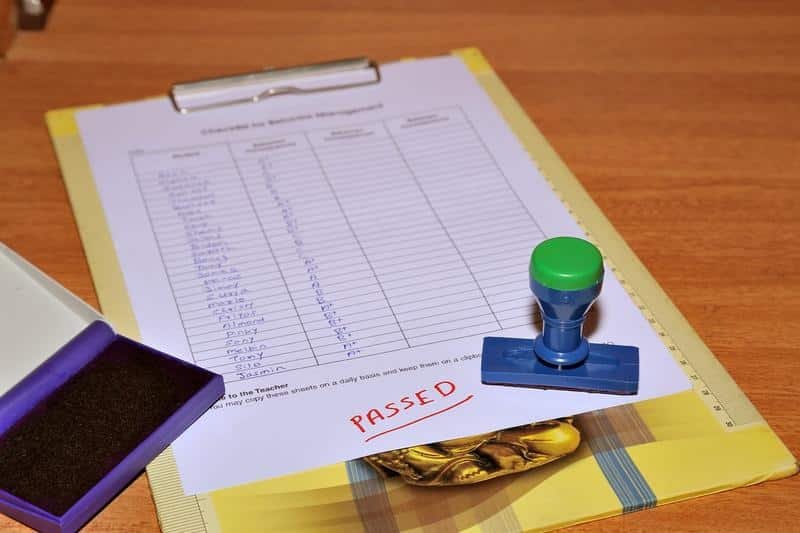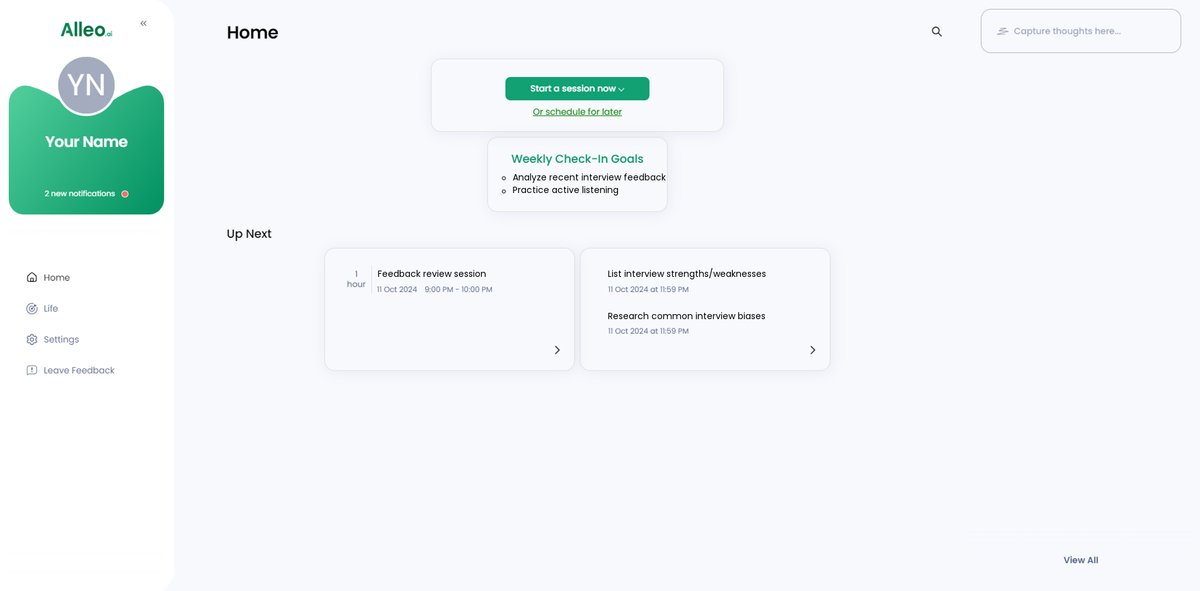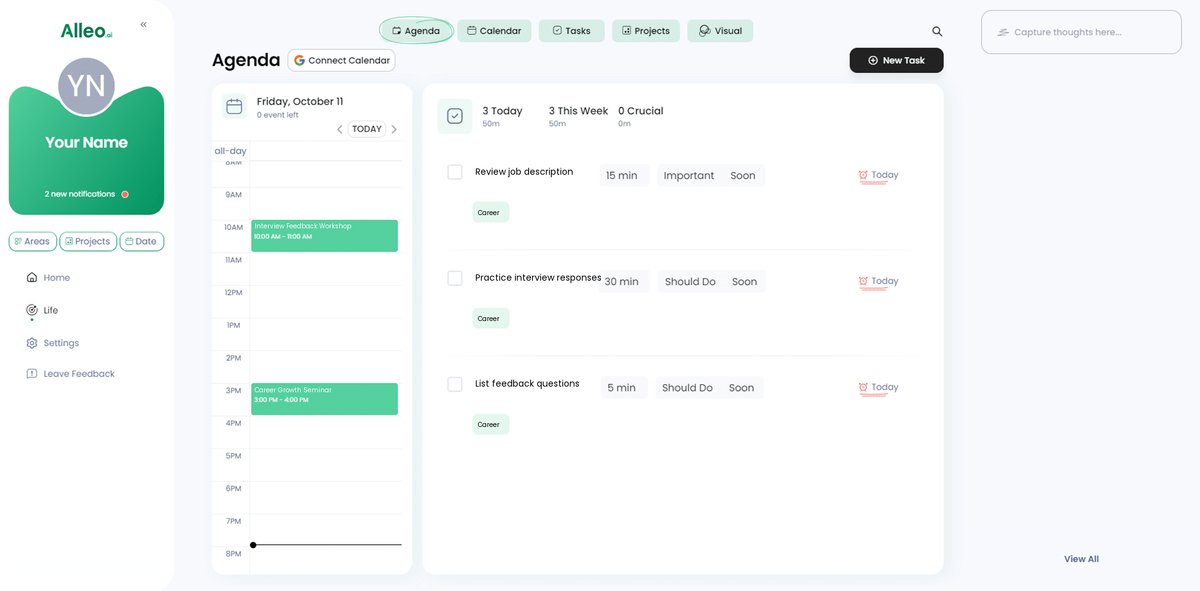6 Expert Strategies for Professionals to Decipher Conflicting Interview Feedback
Have you ever walked out of an interview feeling confident, only to receive feedback that left you scratching your head? This is a common challenge when interpreting conflicting interview feedback.
As a life coach, I’ve helped many professionals navigate these challenges. I often encounter candidates baffled by conflicting candidate evaluations and interview panel disagreement.
In this article, you’ll discover strategies to interpret such feedback, improve your candidate experience, and enhance your career prospects through effective job interview feedback analysis.
Let’s dive into recruitment feedback interpretation and interview assessment discrepancies.

Understanding the Impact of Conflicting Interview Feedback
Interpreting conflicting interview feedback can be deeply frustrating. Many clients initially struggle with job interview feedback analysis that doesn’t align with their self-assessment.
Such mismatched feedback creates doubt and confusion about evaluation criteria. This misalignment can strain the recruiter-candidate relationship and lead to interview assessment discrepancies.
Resolving these hiring decision challenges is crucial. Clear communication and transparent candidate evaluation techniques lead to a more effective hiring process and aid in interview feedback reconciliation strategies.
In my experience, people often find that inconsistent feedback from interview panel disagreement hinders their professional growth. Interpreting conflicting interview feedback is a significant challenge, but one that can be addressed with the right HR interview feedback resolution approaches.

Key Steps to Interpret Conflicting Interview Feedback
Overcoming the challenge of interpreting conflicting interview feedback requires a few key steps. Here are the main areas to focus on to make progress in resolving interview assessment discrepancies:
- Review feedback for specific, actionable points: Identify concrete examples and categorize them to aid in job interview feedback analysis.
- Seek clarification on evaluation criteria: Reach out for details and attend feedback meetings to address conflicting candidate evaluations.
- Compare feedback to job description requirements: Highlight key skills and identify discrepancies to tackle hiring decision challenges.
- Reflect on communication during the interview: Revisit responses and practice active listening to improve candidate evaluation techniques.
- Analyze feedback for potential unconscious biases: Educate yourself and look for patterns in interview panel disagreement.
- Request a follow-up discussion for clarity: Schedule a meeting and summarize the discussion to facilitate interview feedback reconciliation strategies.
Let’s dive into interpreting conflicting interview feedback!
1: Review feedback for specific, actionable points
Interpreting conflicting interview feedback starts with identifying specific, actionable points.
Actionable Steps:
- Review the feedback and highlight concrete examples for job interview feedback analysis.
- Categorize feedback into strengths and areas for improvement, addressing conflicting candidate evaluations.
- Create a list of actionable points from the feedback, considering interview panel disagreement.
Explanation:
These steps help you understand what the interviewer noticed about your performance. This detailed review can reveal patterns or areas where you might need improvement, aiding in interview assessment discrepancies resolution.
According to HiBob, specific feedback supports candidate growth and fosters transparency. This approach ensures you have clear, actionable insights to guide your next steps in interpreting conflicting interview feedback.
Key benefits of reviewing specific feedback include:
- Identifying concrete areas for improvement in recruitment feedback interpretation
- Understanding your strengths more clearly, even with hiring decision challenges
- Developing a targeted plan for growth using candidate evaluation techniques
This process sets the foundation for effective feedback interpretation, critical for your professional development and for navigating interview feedback reconciliation strategies.

2: Seek clarification on evaluation criteria
Seeking clarification on evaluation criteria is crucial to understanding how your performance was assessed, especially when interpreting conflicting interview feedback.
Actionable Steps:
- Draft a polite email to the interviewer or recruiter requesting specific examples and clarification on the evaluation criteria, addressing any interview assessment discrepancies.
- Prepare questions in advance for a feedback meeting to ensure you maximize the discussion’s effectiveness and address any conflicting candidate evaluations.
- Aim to receive a response within a week to keep the process timely and relevant for effective job interview feedback analysis.
Explanation:
These steps help you gain a clearer understanding of what the interviewer was looking for, which can reduce confusion and improve future performance in cases of interview panel disagreement.
According to HiBob, clear feedback supports transparency and fosters professional growth.
Understanding the evaluation criteria can also help you align your skills and approach better with the job requirements, aiding in objective hiring decision-making.
Taking these steps will provide valuable insights and prepare you for future opportunities, helping you navigate recruitment feedback interpretation and hiring decision challenges.

3: Compare feedback to job description requirements
Comparing interview feedback to job description requirements helps you understand where expectations may have misaligned, especially when interpreting conflicting interview feedback.
Actionable Steps:
- Review the job description: Highlight key skills and qualifications listed in the job posting. Compare these with the feedback received to identify areas of alignment and gaps, which is crucial for job interview feedback analysis.
- Create a comparison chart: Visualize the alignment or discrepancies between the feedback and job requirements. Note areas where feedback and job requirements do not align, helping to resolve interview assessment discrepancies.
- Identify discrepancies: Focus on specific instances where your performance was highlighted as lacking, and align them with the job requirements mentioned in the description. This aids in reconciling conflicting candidate evaluations.
Explanation:
Understanding how your interview feedback compares to the job description is essential for pinpointing areas for improvement. This process helps you clarify any misalignment and better prepare for future interviews, addressing hiring decision challenges.
According to OMS Hub, clear communication and transparency in evaluation criteria are crucial for an effective hiring process. By addressing these discrepancies, you can improve your chances of meeting job expectations and enhancing your professional growth.
Benefits of this comparison include:
- Identifying skill gaps
- Clarifying job expectations
- Focusing your preparation efforts
This step is vital for aligning your skills with job requirements and preparing for your next opportunity, ultimately aiding in objective hiring decision-making.

4: Reflect on communication during the interview
Reflecting on your communication during the interview is essential for understanding how you conveyed your skills and experiences, especially when interpreting conflicting interview feedback.
Actionable Steps:
- Revisit your interview responses: Write down the key questions asked and your responses. Identify areas where you could have communicated more effectively, considering any interview assessment discrepancies.
- Practice active listening: Role-play interviews with a mentor or peer, focusing on improving your listening skills and providing clear, concise answers to address potential conflicting candidate evaluations.
- Seek feedback on communication: Ask a trusted colleague or mentor to review your interview performance and provide constructive criticism, helping with job interview feedback analysis.
Explanation:
These steps matter because effective communication during interviews is crucial for making a positive impression and resolving interview panel disagreement.
According to Health Rising, clear communication can significantly impact the recruiter-candidate relationship.
By revisiting your responses and practicing active listening, you enhance your ability to present yourself confidently and accurately during interviews, addressing hiring decision challenges.
Improving your communication skills sets you up for success in future interviews and professional interactions, aiding in objective hiring decision-making.

5: Analyze feedback for potential unconscious biases
Identifying unconscious biases in interview feedback is crucial for understanding potential hidden influences on your evaluation when interpreting conflicting interview feedback.
Actionable Steps:
- Educate yourself on unconscious biases: Read articles or attend workshops to understand common biases in interviews. Aim to identify at least three biases that might apply to your situation, enhancing your job interview feedback analysis skills.
- Compare feedback from multiple sources: Gather feedback from different interviews and look for recurring themes. This helps to spot patterns and potential biases, addressing interview assessment discrepancies.
- Seek an external perspective: Ask a mentor or coach to review the feedback with you. Their objective view can highlight biases you may overlook, aiding in interview feedback reconciliation strategies.
Explanation:
Understanding unconscious biases helps you interpret feedback more accurately and improve future performance, especially when dealing with conflicting candidate evaluations.
According to Workable, recognizing biases is essential for constructive self-assessment. This approach ensures a fair evaluation of your skills and helps you address any unfair judgments, contributing to objective hiring decision-making.
Common unconscious biases in interviews include:
- Confirmation bias
- Halo effect
- Similarity attraction bias
By addressing these potential biases, you can better navigate feedback and enhance your professional growth, improving your approach to interpreting conflicting interview feedback.

6: Request a follow-up discussion for clarity
Requesting a follow-up discussion helps you gain better insights into conflicting interview feedback and aids in interpreting conflicting interview feedback effectively.
Actionable Steps:
- Schedule a meeting: Reach out to the interviewer or recruiter and request a meeting to discuss the feedback in more detail. Aim to schedule this meeting within a week to address any interview assessment discrepancies.
- Prepare specific questions: Before the meeting, list specific questions you want to address. Focus on points of confusion and areas needing clarification, especially regarding conflicting candidate evaluations.
- Summarize the meeting: After the discussion, write a summary highlighting key takeaways and action items. This will help you remember the details and create a plan for improvement, aiding in job interview feedback analysis.
Explanation:
These steps matter because they help clarify any misunderstandings and provide actionable insights for your future interviews, addressing hiring decision challenges.
According to Workable, seeking clarification can significantly improve your performance by addressing areas of confusion, which is crucial when interpreting conflicting interview feedback.
This proactive approach ensures you understand the feedback fully and can act on it effectively, improving your interview feedback reconciliation strategies.
Following these steps will help you turn confusing feedback into a clear path for improvement, enhancing your ability to interpret conflicting interview feedback.

Partner with Alleo to Navigate Interview Feedback
We’ve explored the challenges of interpreting conflicting interview feedback. We’ve discussed how resolving this issue can enhance your career prospects and improve job interview feedback analysis.
But did you know you can work directly with Alleo to make interpreting conflicting interview feedback easier?
Alleo offers affordable, tailored coaching support to help you interpret feedback and address interview assessment discrepancies.
Steps to Get Started:
- Sign Up: Create an Alleo account and start your free 14-day trial. No credit card required.
- Personalize Your Plan: Complete a quick survey about your interview experiences and feedback challenges, including any conflicting candidate evaluations.
- Work with Your AI Coach: Receive full coaching sessions, just like with a human coach, focusing on interview feedback reconciliation strategies.
- Stay Accountable: Get follow-up texts and push notifications to track your progress in resolving hiring decision challenges.
Why Choose Alleo?
- Affordable Coaching: Get high-quality coaching without breaking the bank.
- Tailored Support: Receive personalized advice based on your unique situation, including techniques for handling interview panel disagreement.
- Continuous Improvement: Regular check-ins to adjust your plan and keep you on track with objective hiring decision-making.
Ready to get started for free? Let me show you how!
Sign up today and take the first step towards improving your interview experience and mastering recruitment feedback interpretation with Alleo.
Step 1: Log In or Create Your Account
To start navigating interview feedback with AI coaching, Log in to your account or create a new one to begin your journey towards clearer career insights.

Step 2: Choose Your Focus Area
Select “Setting and achieving personal or professional goals” to address your interview feedback challenges effectively. This option will help you develop strategies to improve your performance and align your skills with job requirements, directly tackling the issues highlighted in conflicting interview feedback.

Step 3: Select “Career” as Your Focus Area
Choose “Career” as your focus area in Alleo to directly address your interview feedback challenges and improve your professional growth, aligning perfectly with the article’s emphasis on enhancing your interview performance and career prospects.

Step 4: Starting a Coaching Session
Begin your journey with Alleo by participating in an intake session, where you’ll discuss your interview feedback challenges and set up a personalized plan to improve your interpretation skills.

Step 5: Viewing and managing goals after the session
After your coaching session, check the Alleo app’s home page to review and manage the goals you discussed, ensuring you stay on track with your interview feedback implementation plan.

Step 6: Adding events to your calendar or app
Use Alleo’s calendar and task features to schedule follow-up meetings, set reminders for interview preparation, and track your progress in addressing feedback, helping you stay organized and accountable in your career development journey.

Moving Forward with Confidence and Clarity
Navigating interview feedback can be challenging, especially when interpreting conflicting interview feedback, but it’s essential for your growth. Remember, understanding and acting on feedback is a skill you can develop, even when faced with interview assessment discrepancies.
By following the steps outlined, you can turn confusion into clarity when dealing with conflicting candidate evaluations. Reflect on your communication, seek clarification, and compare feedback with job requirements to aid in job interview feedback analysis.
I know this process of recruitment feedback interpretation isn’t easy. However, with practice, you will improve your candidate evaluation techniques.
Alleo is here to support you every step of the way in resolving hiring decision challenges. Our AI-driven tools can help simplify this journey of interview feedback reconciliation strategies.
Take action today to enhance your objective hiring decision-making skills. Sign up for Alleo’s free trial and start enhancing your career with guided coaching to navigate interview panel disagreement.